GreenHab Officer: Scott Dorrington
Environmental control: heater on automatic
Average temperatures:
09:12: 73.9 F, 21%
09:34: 75.9 F, 26%
11:23: 89.8 F, 25%
12:05: 94.6 F, 23%
13:40: 100.8 F, 19%
14:00: 89.1 F, 16%
15:19: 101.8 F, 21%
16:07: 98.4 F, 30%
18:38: 84.7 F, 28%
Hours of supplemental light: 4 hours overnight
Daily water usage for crops: 9 gallons
Daily water usage for research and/or other purposes: 0 gallons
Water in Blue Tank (200 gallon capacity): 99 gallons
Time(s) of watering for crops: 09:15 water, 11:23 mist, 13:40 water + mist, 15:20 mist
Changes to crops: None
Narrative:
Another clear sunny day today. I gave the plants their first watering of 4 gallons around 9am. The tomato plants were looking a little dry again, so wanted to give them a good watering early in the day. During this watering, I also noticed that the wilty cucumber (cuke #1) had a tiny cucumber on it. This was very surprising, as it doesn’t look very healthy. It got some extra water to try to bring it back to health. I noticed that the orange tomatoes on #9 are also now red. I think they will be harvestable in the next day or two. I returned a few times throughout the day to log temperatures and mist. The second watering was given at 13:40. This time 5 gallons. I opened the door for around 10 minutes during this watering to lower the heat a bit for the afternoon, and rearranged the plants to be out of the sun. Today’s music therapy featured Bernard Fanning and some podcasts.
Harvest: None
Support/supplies needed: None
EVA Report – January 31st
EVA # 18
Author: Andrew Wheeler
Purpose of EVA: Redeploy of solar logger outside the science dome following recharge of battery.
Start time: 0755
End time: 0815
Narrative: Having been retrieved from it’s position outside the science dome, the solar logger was redeployed to the same location following full recharge of it’s battery. A visual inspection of the elements of the MDRS and the connecting tunnels for the engineering officer was also carried out at this time before returning to the hab.
Destination: Outside the science dome panoramic windows.
Coordinates (use UTM WGS 84): 518228E 4250718N
Participants: Andrew Wheeler and Steve Hobbs.
Road(s) and routes per MDRS Map: MDRS campus environs
Mode of travel: Walking.
Astronomy Report – January 31st
[category
astronomy-report]
Name: Rob Hunt
Crew: 291
Date: 31/01/2024
MUSK OBSERVATORY (MO)
Solar Features Observed: Sun spots observed, imaged for processing later
Problems Encountered:
09:30
excellent blue-sky day, no wind, no clouds, temp. ~14o C, RH ~35%,
bashed top of head entering door – again. This time it drew a small amount of blood that stopped very quickly. Since I’m Crew Medical Assist, and Crew MO was not available, I returned to the HAB, disinfected it and applied a dressing. Incident recorded to MO,
I suggest write sign on inside and outside of door saying “Mind your head”,
shutter, and azimuth dome motors worked well,
at first the ‘scope Hand Control didn’t follow normal menu presentation so I power cycled at the pier and then ‘scope slewed to target.
10:05
subsequently, the first power-up resulted in the ‘scope perfectly with the Sun centered in field of view,
as yesterday, live view is fuzzy and I can’t achieve granular surface of chromosphere,
as for all of these observing sessions, a large, fuzzy ‘plume’ is seen on one side of the target in the eyepiece.
11:10
granular view of chromosphere still not being achieved despite tweaking tuners as Observatory Manager suggested,
while tweaking settings the ‘plume’ was seen in a number of the SharpCap captures,
something’s not right,
primary lens/filter was photographed to include in condition report of scratch and smudge noticed on 22nd Jan but not reported until now,
11:40
ran first capture at 50/2.16/80 (Gain/Exp/Histo),
ran several more captures at various settings.
14:00
‘scope reached limit of tracking ability so I stopped, packed up and returned to HAB,
data processing will be done at a later time.
Crew Photos – January 30th
Sol Summary – January 30th
Sol: 9
Summary Title: Pushing the limits
Author’s name: Andrew Wheeler
Mission Status: Nominal
Sol Activity Summary: Another clear and cold (-4C) morning. Perfect for the solar observatory and EVAs. A morning EVA to Pooh’s Corner allowed a team to revisit a site last observed 18 years ago to gauge arid land degradation with a view to develop a geoheritage strategy. Concurrent with this, more robot rover traction trials were conducted over the different terrain. This EVA was most successful. The afternoon EVA sought to push the rovers to the maximum of their endurance under the current conditions, in an attempt to reach White Moon at the junction of Cow Dung Road and Brahe Highway. Here, gypsum crystals are exposed at the surface and these provide excellent targets for spectral analysis. Under the conditions, the rovers made it to approximately 800m short of the target. This distance was easily walked and 20 minutes later the team were there. Spectra were taken, samples collected and, in too short a time, the team headed back to the MDRS. However, the journey was interrupted by the appearance of a pair of (juvenile?) pronghorn antelope who crossed our path. What are they doing on Mars?. During all of this, the sun was continuously imaged in the observatory and an enhanced composite produced. Cheesy garlic scones for lunch and jambalaya for dinner was greatly enjoyed by all.
Look Ahead Plan: A day of consolidation. With no EVAs planned (except for a short one to redeploy the solar logger), we will use the time to crunch data, process samples and collect laboratory spectra for comparison to field data.
Anomalies in work: Nothing to report.
Weather: Clear morning at -4 Celsius rising to mid teens during the day. No clouds and no precipitation. Humidity continuously dropping from near 70% at sunrise to 30% in the afternoon. The wind was faint to gentle during the day.
Crew Physical Status: Nothing to report.
EVA: EVA 15 with Clare, Steve and Alex in search of anhydrite yardangs near Pooh’s Corner complimented with robot rover trials.
EVA 17 with Andrew, Steve and Scott to White Moon to push the rovers to their limits and collect spectra and samples for analyses.
Reports to be filed: Sol Summary, Journalist’s Report, Greenhab Report, Operations Report (including an HSO report), EVA report, EVA Request(s), Astronomer’s report.
Support Requested: Nothing to request.
Operations Report – January 30th
SOL: 9
Name of person filing report: Scott Dorrington
Non-nominal systems: None
Notes on non-nominal systems: None
ROVERS EVA 17
Spirit rover used:
Hours: 244.4
Beginning charge: 100%
Ending charge: 35%
Currently charging: No
Opportunity rover used:
Hours: 158.9
Beginning charge: 100%
Ending charge: 48%
Currently charging: No
ROVERS EVA 15
Curiosity rover used:
Hours: 261.1
Beginning charge: 100%
Ending charge: 75%
Currently charging: No
Perseverance rover used:
Hours: 283.0
Beginning charge: 95%
Ending charge: 68%
Currently charging:
General notes on rovers:
Perseverance was a little under-charged this morning. We experienced a power outage that may have been due to the rovers being charging.
Summary of Hab operations:
WATER USE: 22.87 gallons
Water (static tank): 252.66 gallons (depth 22.75”)
Static tank pipe heater (on or off): on
Static tank heater (On or off): on
Toilet tank emptied: yes
Summary of internet: Nominal during comms window
Summary of suits and radios:
Suit #8: Located nuts from RAM, however did not fit screws. Not sure that there are nuts that will fit. Can have another look in RAM tomorrow.
Suit #6: Noted yesterday that the voltage of this suit was rather low after EVA. Mission support suggested a test of running the fan for 1 hour. Starting volts: 13.61 V, end: 6.60 V. Similar numbers to yesterday’s EVA
Suit #7: Fan was noticeably low during afternoon EVA. Compared to other suits upon return and it sounds quieter inside helmet. Noticed some strange voltage measurements following EVA as well. After turning off suit, voltage read around 6.5 V, however voltage slowly increased over the next 10 minutes, leveling out to around 11.85 Volts.
Summary of GreenHab operations:
WATER USE: 10 gallons
Heater: On
Supplemental light: 10pm – 2am
Harvest: 40g kale, 18g arugula, 40g (1x) radish, 37g lettuce
Summary of ScienceDome operations: Not used
Dual split: Nominal
Summary of RAM operations: Entered RAM to locate nuts for suits.
Summary of any observatory issues: See astronomy report
Summary of health and safety issues: None
Questions, concerns and requests to Mission Support: None
Journalist Report – January 30th
Get a lode of this
EVA 1 went out to the area near Marble Ritual, just east of the MDRS, where Steve tested his rover’s mobility in a more ‘natural’ setting across irregular terrain typical of the Martian landscape. He also experimented with the maximum inclines and declines it could traverse (most of the time we found the rover was limited by wheel traction rather than power) and conducted some further tests with its integrated spectrometer, including a panorama and additional material spectrification samples. Clare spent the time doing ‘exogeoconservation’ work – i.e., recreating past conservation imagery to assess geomorphological changes of the terrain over time (several decades in this instance). Somewhere along the line, we stumbled upon some sought-after petrified wood samples.
EVA 2 went out a lot further… i.e., as far as the rovers could physically take them along Cow Dung Road before they hit 55% battery charge (the designated point of no return). They walked the rest of the way to “White Moon”, about 4km due north of the hab and west of Tharsis Montes, where they searched for more gypsum deposits. They found plenty. There was initially some intent to scout for evaporite deposits as well, but that was abandoned in favour of gypsum recovery. Scott also dipped his toes into ‘celestial navigation’ – i.e., using his theodolite app to get bearings of terrain features relative to the sun, for future reference.
Rob spent more time in the observatory. Although the sun was a little fuzzier today, he managed to fully process an image (and troubleshoot the process).
As for the food component of this report: today’s menu consisted of garlic-cheese scones (pronounced ‘skonn’ thanks), cornbread, jambalaya (I only learned about this today and can’t provide much additional context, but can confirm it was a rice-meat meal that tasted great), and a salad, containing (among other things) a self-grown radish and delicately dressed by Clare’s proprietary/improvised secret sauce.
Highlights of the day: Gypsum motherlode, petrified wood, a radish (and soon, cucumber) from the Greenhab, Martian antelopes.
Lowlights of the day: Multiple power outages, misidentified anhydrites (by someone several decades ago), another UWO (the third in as many days), Clare hasn’t watched Aliens, Terminator 1/2, Contact, The Thing (1984) or Jurassic Park.
– Alexander Tobal, Crew 291
GreenHab Report – January 30th
GreenHab Officer: Scott Dorrington
Environmental control: heater on automatic
Average temperatures:
09:24: 75.4 F, 20%
09:52: 78.1 F, 26%
10:58: 86.4 F, 32%
12:15: 95.2 F, 25% door open
12:28: 84.4 F, 19% door closed
13:11: 100.6 F, 19%
14:39: 102.9 F, 16%, fan on briefly
16:49: 94.8 F, 31%
17:19: 85.1 F, 32%
Hours of supplemental light: 4 hours overnight
Daily water usage for crops: 10 gallons
Daily water usage for research and/or other purposes: 0 gallons
Water in Blue Tank (200 gallon capacity): 108 gallons
Time(s) of watering for crops: 9:30 water + mist, 10:58 mist, 13:11 water, 15:00 water, 17:00 mist
Changes to crops:
Narrative:
Today was another sunny clear day. I checked in with the plants in the morning around 9am and found the moisture reader on the tomatoes was getting to the low side of the moist range. I decided to give them their first watering earlier today with 4 gallons – I opened the door for 10 minutes during watering to drop the temperature a bit. During the watering, I noticed a surprise cucumber on cuke #4. This was surprising given the many cucumber dramas experienced by the previous crew. The other cucumber is still looking a little wilty though. I also did a stock take of the other fruits that are budding. Tomato #9 has 4 yellow/orange fruits, tomato 7 has two little fruits turning orange, and tomato 4 has another one turning orange. There were some large radishes in the radish pot, and there are now 10 peas pods on the pea vines. The mint pot labeled 30/12/2023 is also starting to show little mint plants poking out. Today’s soundtrack featured Colin Hay and Client Liaison. I returned around midday before my afternoon afternoon EVA to give the plants their second water of the day (another 3 gallons). During my afternoon EVA, I had some of the crew to check in on the temperature in the GreenHab. In the afternoon, the crew requested some greenery for tonight’s dinner of Jambalaya rice. We harvested some kale, arugula, and a nice fat radish. I placed the head of the raddish in a jar with some water and soil – I will look up during tonight’s comms window if radishes can be re-grown from the heads. The harvested greens were mixed together with some Korean BBQ sauce as a stand-in for salad dressing. Very fresh and tasty.
Harvest: 40g kale, 18g arugula, 40g (1x) radish, 37g lettuce
Support/supplies needed: None
EVA Report – January 30th
EVA # 15
Author: Clare Fletcher
Purpose of EVA: Attempt to find a photograph a site previously known as “White Mushroom Field” by Henrik Hargitai to note charge over time in the environment. Gain field spectral measurements of the mushrooms.
Start time: 1000
End time: 1200
Narrative: The site of these yardangs or “mushrooms” was very easy to find. There was a nice flat plain to drive the robot across and continue testing its mobility across the plain and some of the slopes. The site described as “White Mushroom Field” by Hargitai was also easy to find, and looked to be in reasonable condition compared to the 2006 photo taken by Jon Clarke. The "mushrooms" turned out not to be anhydrite, but just a white/grey mudstone. They also had concretions in them which was interesting. We attained a spectral signature for the "mushrooms" as well as other features in the landscape.
Destination: Field of yardangs near to Pooh’s Corner (to the West). Parking rovers at 518716, 4251064. Walking to 518598, 4251110. Co-ordinates to the site provided by Henrik Hargitai in a previous paper.
Coordinates (use UTM WGS 84): Parking rovers at 518716, 4251064. Walking to 518598, 4251110.
Participants: Steve Hobbs, Clare Fletcher, Alex Tobal
Road(s) and routes per MDRS Map: Exit Hab via main airlock. Drive down driveway to Cow Dung Rd 0110. Drive North on Cow Dung Rd 0110 until straight between Marble Ritual and Pooh’s Corner. Walking within 200m of rovers.
Mode of travel: Driving and walking.
Astronomy Report – January 30th
[category
astronomy-report]
Name: Rob Hunt
Crew: 291
Date: 30/01/2024
MUSK OBSERVATORY (MO)
Solar Features Observed: Sun spots observed, imaged, and fully processed for emailing (attached).
Problems Encountered:
08:25
Sun was not fully on ’scope until 09:00 so time in MO will typically be 08:30 to 14:30,
because of the state of the shutters, the ’scope and dome floor are at high risk of being water damaged from rain ingress,
on the floor near the western alcove the cabling coming out of the floor is a tripping hazard and some of the cables are damaged or at risk of being damaged (image attached),
on power-up the Celestron Hand Control wanted ENTER to wake from HIBERNATION then asked for TIME and DATE then showed CGO PRO READY,
it did not show ALIGN SUCCESS so I pressed SOLAR SYSTEM,
SOLAR SYSTEM showed MOON with a “W” in top right corner, and I could not access MENU to get to SUN,
pressing MENU changed the ”W” to an “E” and I was able to scroll to SUN which slewed ‘scope to the Sun,
10:30
‘scope struggled to get crisp images all day, with no prominances but several groups of fuzzy Sun spots observed,
the observed Sun spots were the same ones seen for the last few days.
SharpCap
as usual the program is very washed out to look at and attempts to give it better contrast by adjusting Windows 10 display settings were unsuccessful,
in the Quick Guide (MOQG), I suggest software be named consistently, i.e. SharpCap (not Sharp Cap),
as yesterday, instead of saving to the Capture folder as an .avi file, SharpCap saved 1,000 JPG images so I changed the Output Format to .avi.
in MOQG at Step 14. p25, I suggest this be checked in top, right corner of window.
AutoStakkert
in MOQG chapter on p28, I suggest say in Step 1. that program opens in two windows, the sizes of which can’t be changed (?),
in MOQG, I suggest software be named consistently, i.e. AutoStakkert (not Autostakkert),
in MOQG, I suggest Step 6. to read “After first two steps of STATUS in middle panel of left window show green ticks…”,
12:15
Registax
in MOQG, I suggest Step 2. to read “…the stacked tiff file from AutoStakkert…”,
in MOQG, I suggest Step 3. to read “The file will automatically open in the Wavelet tab (top, left)…”.
Photoshop
in MOQG, I suggest software be named consistently, i.e. Photoshop,
in MOQG, I suggest Step 1. to read “…Open Photoshop in the task bar and in the Window dropdown menu ensure Tools is selected and use the Quick Selection Tool in the Tools Panel.”,
in MOQG, I suggest Step 2. to read “…Chromosphere and Prominence PNG files in the SharpCap Capture folder and open them. If you didn’t image any Prominences then just open the Chromosphere file and process that.”.
14:00
outcome for the day is 1,000 frames from SharpCap processed through AutoStakkert, Registrax, and Photoshop, then prepared for this Astronomy Report to Mission Support (image attached).
15:00
successfully parked ‘scope in HOME POSITION, HIBERNATED, and completed Closing Procedure per MOQG chapter,
returned items to storage locations and locked up MO.


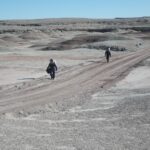
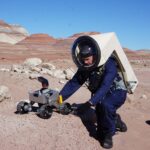

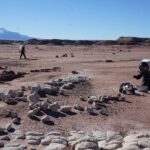

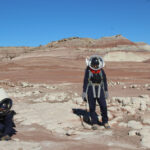
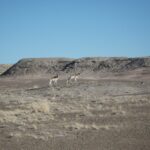
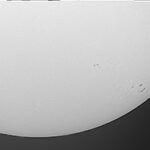
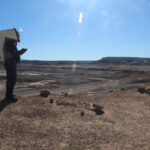
You must be logged in to post a comment.